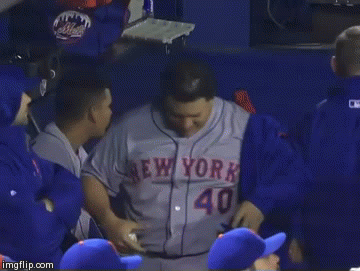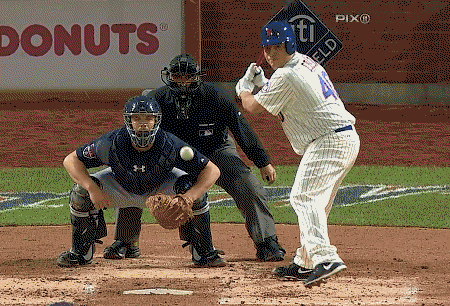This article was cross-posted on FanGraphs Community on January 14, 2015.
With the winter meetings over and Opening Day months away, now is an interesting time to consider the economics of baseball. Earlier this year, I developed a framework for estimating NBA team values for Mid Level Exceptional, which met with a positive reception. With some tweaks, it can be adapted to MLB team valuation.
With the winter meetings over and Opening Day months away, now is an interesting time to consider the economics of baseball. Earlier this year, I developed a framework for estimating NBA team values for Mid Level Exceptional, which met with a positive reception. With some tweaks, it can be adapted to MLB team valuation.
In
my franchise
valuation methodology, each team is priced based on a multiple of its
revenue. These multipliers reflect
future earnings potential: the higher the multiple, the brighter the prospects
for earnings growth. This approach is
common in finance; Aswath Damodaran, professor of finance at NYU Stern and
author of Musings on Markets, used
it to generate a back-of-the-envelope valuation for the recently sold Los
Angeles Clippers.
Both
Forbes and Bloomberg
compute estimates of each MLB franchise’s value and annual revenue. But I’m wary of their valuations. Forbes consistently undershoots the
sale price of NBA teams. In January,
Forbes pegged the Clippers’ value at $575 million; five months later, they sold
for $2 billion. Prices for sports franchises have risen sharply over the past
few years, as sports programming has become ever
more valuable as live TV viewership dwindles. The Forbes methodology hasn’t incorporated
this shift in the value of broadcast rights, leading me to guess that its MLB
valuations are also too low. Bloomberg’s
version reflects the same problem. It
values the average MLB team at 3.4 times revenue, not much higher than Forbes’
2.9 times revenue.
In my version, I started with
Bloomberg’s 2012 estimates of franchise revenue, which include revenue from teams’
stakes in regional sports networks and MLB Advanced Media. (Forbes’ revenue figures are newer, but
exclude these important revenue sources.)
To update the revenue numbers, I increased them by 20%, which
is in keeping with MLB’s total revenue growth over the past two years.
Then,
I created a range of revenue multipliers, which reflect the team’s market size
(approximated by the size of the team’s MSA).
They are based on the multiples implied by recent MLB and NBA franchise
sales. In the model, big-market teams
have higher multiples; I conclude that they generate disproportionate value
from greater national media exposure, prestige, and ability to attract top free
agents. MLB’s lack of a salary cap makes
the big-market advantage even more formidable than in the NBA.
I also chose multipliers that
are slightly lower than the multipliers in my NBA team valuation model, since I
perceive baseball to be a more mature industry than basketball (which means
slower long-term revenue growth; this is analogous to Exxon trading at a lower
P/E ratio than Facebook.) Put the
revenue and multipliers together, and the result is a range of estimated sale
prices for each team.
Before jumping into the valuations, it’s worth explaining the shortcomings of the model. The revenue multipliers are my best guesses, and I have no hard proof that they’re correct. Using 2014 revenue data would be more accurate than assuming that individual teams’ revenue grew 20% since 2012, and multiple years of revenue data would be better than a one-year snapshot. But to paraphrase Donald Rumsfeld, you go to war with the data you’ve got. This is why I compute a range of likely values; unlike Forbes or Bloomberg, I don’t see the point of highlighting a single number of dubious accuracy.
With that said, here are the
ranges of values for each MLB team.
A couple of findings that jump off the page:
- To no one’s surprise, the New York Yankees are the most valuable team in baseball, with an estimated price tag between $3.4 billion and $5.5 billion. The Tampa Bay Rays are the least valuable team, with a value ranging between $630 million and $840 million.
- 21 teams have a median value of at least $1 billion; in my earlier research on NBA team valuation, only 11 teams out of 30 were valued as highly.
- The big brother/little brother dynamic of the New York and Chicago teams is reflected in their valuations. The Yankees are worth more than twice as much as the Mets, and the Cubs are worth 40% more than the White Sox.
- The Boston Red Sox are the highest-valued team in a medium-sized market (with a median value of $2.4 billion), and the St. Louis Cardinals are the highest-valued team in a small market (with a median value of $1.1 billion). This reflects their recent success on the field, as well as their fan base’s reach beyond their core MSAs.
- The Miami Marlins and Houston Astros appear overvalued in the model, since their recent poor performance and lack of popularity are only partially reflected in their revenue. Their MSA’s sizes probably overestimate the size of their fan bases. Furthermore, the model doesn’t reflect team-specific issues like fan disenchantment with a team’s owners (Marlins) or difficulty in making the team’s regional sports network widely available (Astros).
Next time an MLB franchise sells, we’ll have a clearer
indication of how accurate this valuation method is.





